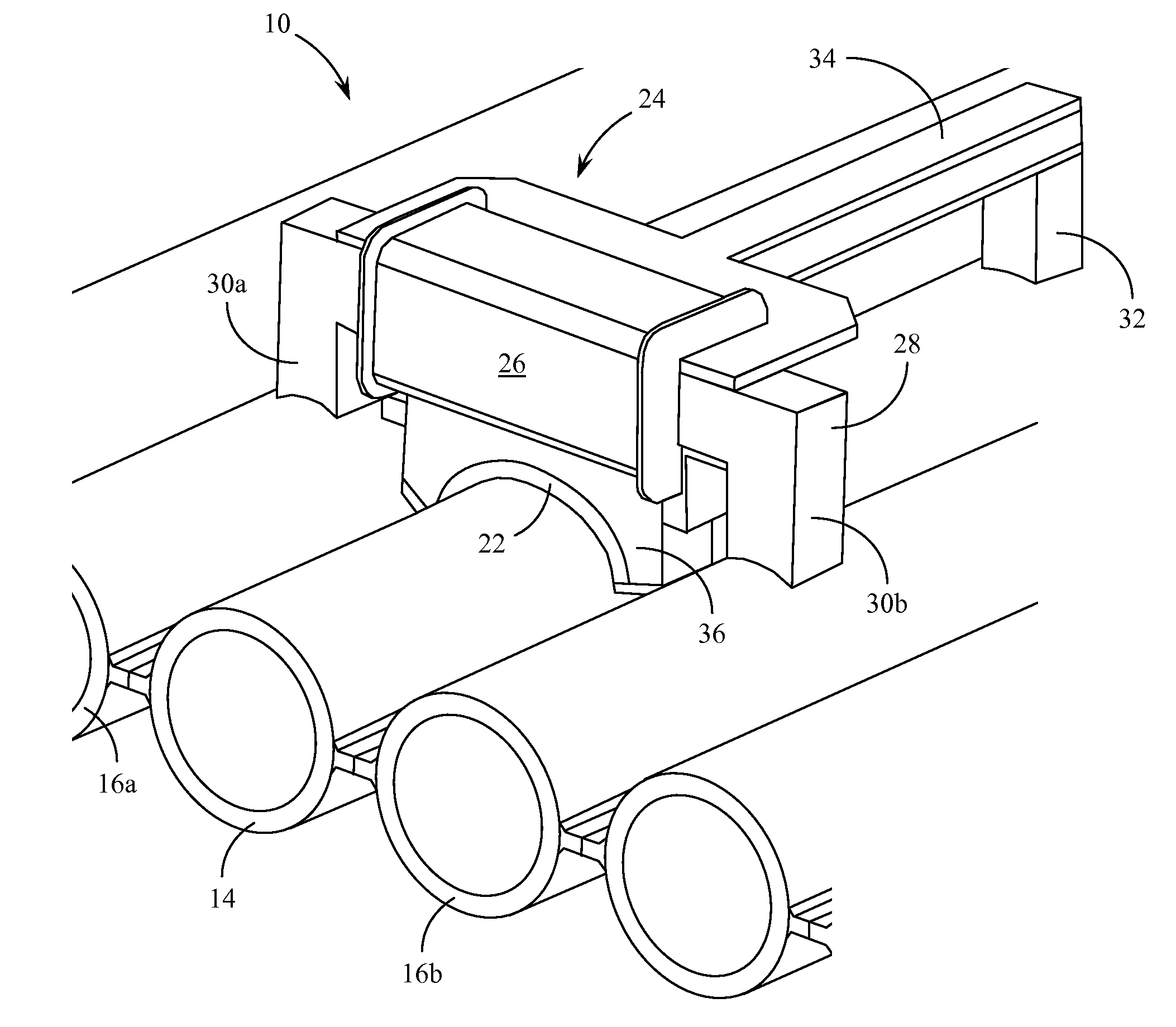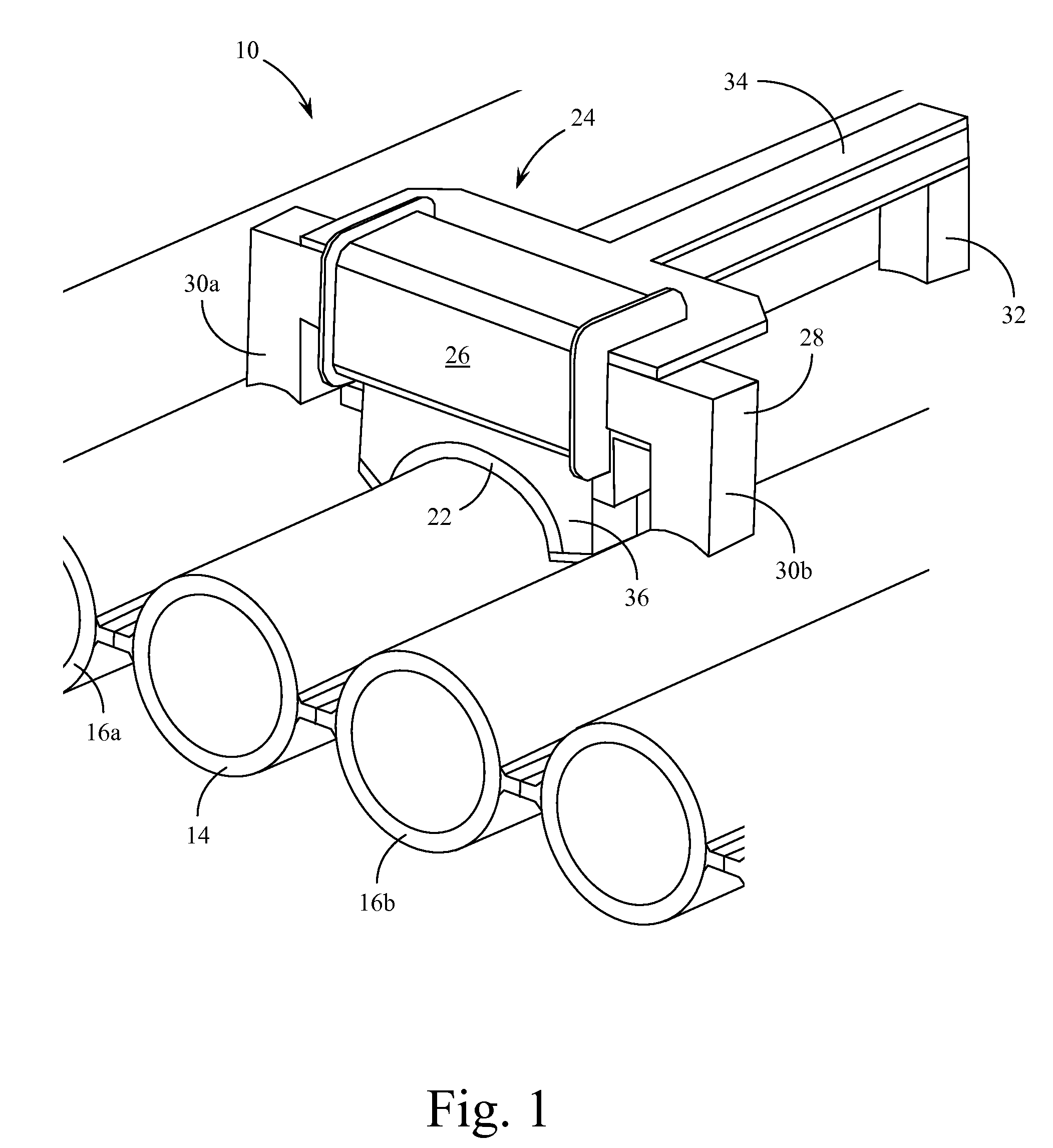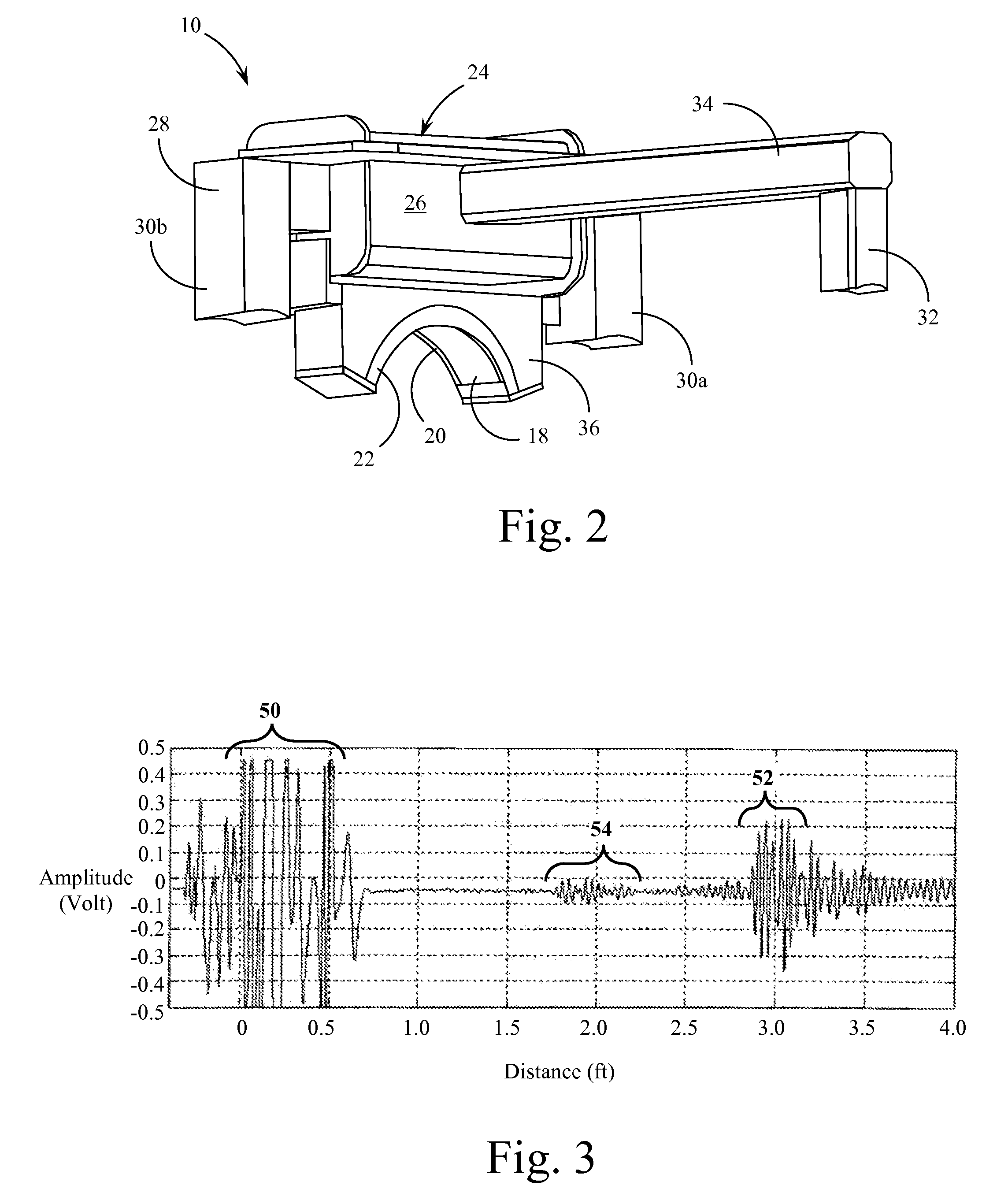Method and device for long-range guided-wave inspection of fire side of waterwall tubes in boilers
- Summary
- Abstract
- Description
- Claims
- Application Information
AI Technical Summary
Benefits of technology
Problems solved by technology
Method used
Image
Examples
Embodiment Construction
[0025]In general, a preferred method and apparatus for inspecting waterwall tubes for fire side damage according to the present invention, may be summarized as follows:
[0026](a) The placement of a plate type magnetostrictive sensor (MsS) guided-wave probe on the fire side of a waterwall tube, that operates in shear-horizontal (SH) wave mode or, equivalently, torsional (T) wave mode within the tube.
[0027](b) The mechanical coupling of the probe to the tube and the launching of a pulse of guided-waves to one side of the probe (such as upward) along the tube length and the detection of signals reflected from that side. The process is then repeated to launch waves to the other side of the probe (such as downward) and detect the signals reflected from that side.
[0028](c) The analysis of the received signal data for anomalies and defects (cracks, fractures, wall-thinning, etc.).
[0029]The various drawing figures briefly described above illustrate schematically a device for inspecting water...
PUM
 Login to View More
Login to View More Abstract
Description
Claims
Application Information
 Login to View More
Login to View More - R&D
- Intellectual Property
- Life Sciences
- Materials
- Tech Scout
- Unparalleled Data Quality
- Higher Quality Content
- 60% Fewer Hallucinations
Browse by: Latest US Patents, China's latest patents, Technical Efficacy Thesaurus, Application Domain, Technology Topic, Popular Technical Reports.
© 2025 PatSnap. All rights reserved.Legal|Privacy policy|Modern Slavery Act Transparency Statement|Sitemap|About US| Contact US: help@patsnap.com



